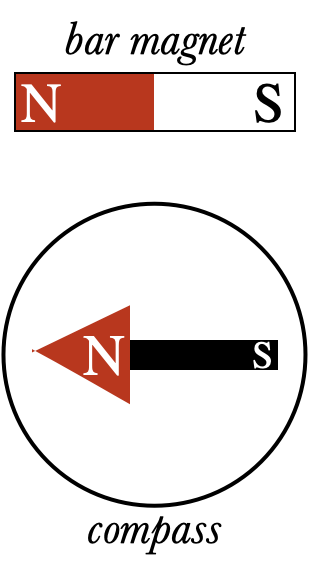Magnetic Poles
So far we've talked about two noncontact forces: gravity and the electric force . A third noncontact force is the magnetic force.
Bar magnets have two magnetic poles: an "N" pole and an "S" pole. These are different from positive and negative charges, but they act in a similar way:
Opposite poles attract each other.
A quite common magnet is a compass needle: it points north (more or less) because it is a magnet with an N pole at the arrow's tip and an S pole at the arrow's tail. We will often use arrows in this chapter to represent magnets, and talk about magnets "pointing" from the S pole to the N pole.

When magnets are placed next to each other but not allowed to spin, then they will attract or repel each other as shown. Most of the time, however, they are able to spin as well, and will either turn so that they are end-to-end and point in the same direction, or side-by-side pointing in opposite directions.
Question

Compasses work because the Earth is kind of like a giant bar magnet. Based on how they work, which kind of pole is up in Canada—an N pole or an S pole? (The answer is on the next page.)